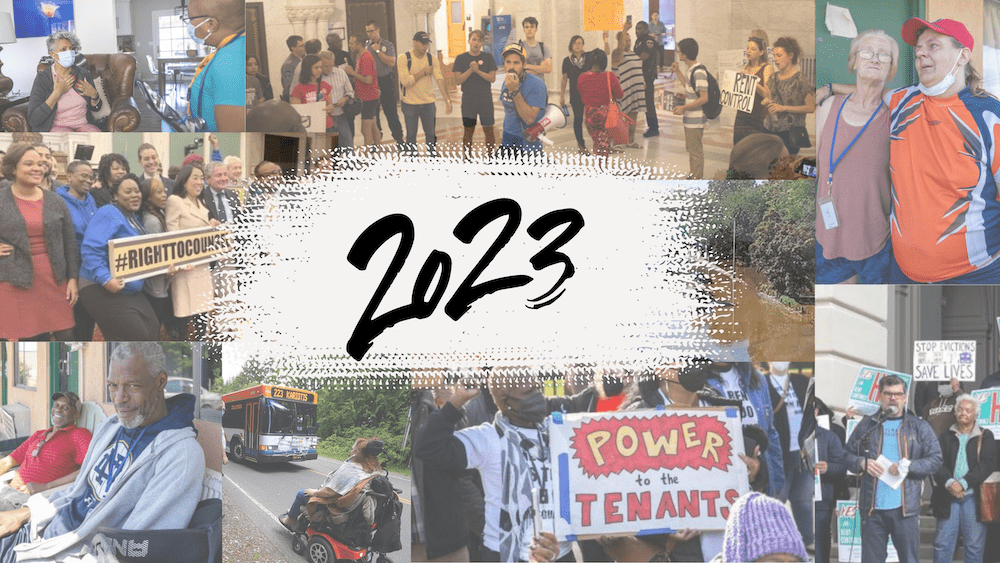
Several high-rise offices of banks in a city skyline. Photo by Expect Best via Pexels
For decades, the federal Equal Credit Opportunity Act has allowed banks to offer special mortgage programs specifically for “disadvantaged” homebuyers. The law creates an exception to anti-discrimination rules so banks can boost their lending to people of color and other underserved groups without having to worry about being sued. These special purpose credit programs, or SPCPs, are potentially powerful tools to extend credit and subsidies to would-be buyers who are struggling to get mortgages. Fair housing advocates say the programs could help raise persistently low homeownership rates among Black and Latino families, and begin to narrow their massive deficit in household wealth compared to white households.
“Wealth at its core is homeownership. Not cash in the savings account—the real wealth measure is primarily driven by homeownership. Intergenerationally, it makes a big, big difference,” said Gabe Del Rio, CEO of the nonprofit Homeownership Council of America. “If we’re not working on homeownership, we’re not really going to close that gap.”
Mortgage SPCPs are already available for certain groups, such as people with disabilities. But despite the tremendous need, and federal mandates for financial institutions to serve people of color, historically lenders have almost entirely declined to offer SPCPs to specifically benefit racial minorities.
However, that is starting to change. The surge of anti-racist sentiment that followed the murder of George Floyd by Minneapolis police two years ago has spurred broader interest from government, financial institutions, and foundations in closing the racial wealth gap, including new efforts to encourage banks to create SPCPs.
[RELATED ARTICLE: Increasing Homeownership Won’t Close Racial Wealth Gap]
At the same time, under the Biden administration, federal regulators are poised to update the Community Reinvestment Act in ways that could boost incentives for banks to lend to people of color, whether through SPCPs or other types of mortgage programs.
The 1977 law was crafted to combat redlining, the practice of denying mortgages based on applicants’ race or ethnicity. However, the actual language of the CRA and its regulations only requires banks to provide services in low- and moderate-income (LMI) neighborhoods, rather than lend specifically to people of color, many of whom do not live in the designated areas.
“Lending to LMI borrowers and LMI neighborhoods is not the same as lending to minority borrowers or minority neighborhoods. Moreover, LMI neighborhoods do not highly overlap with minority neighborhoods,” Urban Institute researchers wrote in a recent analysis of the CRA.
Advocacy groups like the National Community Reinvestment Coalition (NCRC) argue that regulators should add an explicit racial focus to the CRA regulations to drive more lending in Black neighborhoods.
“As there has been more and more conversation around the racial wealth divide, part of that argument is that income levels hide the extent of inequality. That reinforces this idea that LMI is not as clarifying as race or wealth. Instead of using another measure as an indicator of race, why not explicitly go at race?” said Dedrick Muhammad, chief of membership, policy, and equity at NCRC. “That’s what we’re trying to solve for, that African Americans of low income or moderate income still have radically lower wealth levels.”
Skittish About Race
The renewed efforts to change bank lending practices are just getting started. How much difference they will make for Black, Latinx, Asian American, and Native American people who struggle to get affordable mortgages is not yet clear.
The Federal Reserve, the Federal Deposit Insurance Corporation (FDIC), and the Office of the Comptroller of the Currency (OCC) are working on the first major revision of CRA regulations in 27 years, with an announcement of new proposed rules expected perhaps as soon as April. Officials have said addressing systemic inequity in credit access is a top priority of the reform.
“A modernized CRA should help move the needle on credit access, wealth building, and the availability of community development financing. This includes strengthening the regulations to ensure that a wide range of low-income and minority banking needs are being met,” Fed Governor Lael Brainard told an October 2020 meeting of the National Housing Conference, a coalition of affordable housing groups.
But while the agencies’ proposals discuss boosting investment in minority- and women-owned banks and punishing banks for discriminatory practices, in their public statements regulators so far appear to be maintaining their focus on neighborhood LMI status rather than race as the main factor banks should be required to consider.
“When the Federal Reserve published its last proposed CRA regulations, they spent several pages talking about the history of the civil rights acts, that this was the reason the law was passed, and how the race issue had been destroying these neighborhoods. And then when they proposed their regulations there was nothing about race in them,” said Calvin Bradford, a fair housing researcher and consultant in Illinois who was involved in creating CRA in 1977, and who serves on the board of the nonprofit Woodstock Institute.
Getting lenders to create SPCPs, such as low-interest mortgage products reserved for Black homebuyers, may be an easier lift. In an effort to reassure banks that are skittish about being sued, the Federal Reserve, the Department of Housing and Urban Development, the Department of Justice, and five other federal agencies put out a joint statement in February saying racially targeted lending programs for disadvantaged borrowers do not violate fair housing laws.
While such mortgage programs are still vanishingly rare, they have been used occasionally. For example, in December 2021 a bank in Indiana agreed to create a Black-focused SPCP to settle a redlining lawsuit. In addition, since Floyd’s death, banks, foundations, advocacy organizations, and private donors have poured millions of dollars into grant programs for Black homebuyers, a type of SPCP that helps people who have sufficient incomes but don’t have enough savings for a downpayment. Last year, as part of a multi-billion dollar racial-equity initiative, Chase Bank expanded a program that gives a $5,000 grant to its qualifying borrowers in majority-Black census tracts.
Del Rio learned about SPCPs several years ago when he was serving on a bank board. He said he was “terribly frustrated” by how few people knew about them, even among housing activists, and by lenders’ reluctance to create them. “It had not been touched, because people did not have the political will,” he said. “You’re totally allowed to make a quasi-biased product that assists people.”
Now, however, his organization is helping community development financial institutions create SPCPs and has developed its own BIPOC downpayment assistance program. After spending years trying to get banks to contribute a little money to satisfy their CRA obligations, donor funding is suddenly flooding in. “Some wealthy folks from Connecticut reached out to us and said, ‘We want to make more Black homeowners in our area, how can you help us make that happen?’” he said. “Wow. That’s a big change.”
The Homeownership Council is also working with the National Fair Housing Alliance and the Mortgage Bankers Association to build a toolkit for lenders who want to create an SPCP, which will be released this summer, Del Rio said.
“Nobody was listening until George Floyd was murdered. Now we’re listening, and now people are going, ‘Whoa, wait a minute. What about this racial equity piece?’” he said. “That’s why I’m so excited about the work now, because of the arc of the interest level that I’ve seen.”
Reluctant Regulators
When Wisconsin Sen. William Proxmire sponsored the Community Reinvestment Act, he clearly saw it as a civil rights law to combat redlining, Bradford said. While Congress had passed the Fair Housing Act, the Equal Credit Opportunity Act, and the Home Mortgage Disclosure Act in the preceding few years, many banks still weren’t providing services to residents of poor, largely Black, urban neighborhoods that had been ravaged by disinvestment.
But power in Congress was shifting toward Republicans and Proxmire did not have the votes to pass another civil rights law. So CRA was written to focus on income, scoring banks on how well they served designated low- to moderate-income neighborhoods or assessment areas.
“Everybody knew that meant race, but they didn’t put ‘race’ into the Act specifically. That’s clearly what the law was for, and the regulators understood that. There were 12 assessment factors initially, and one of them was whether the banks were involved in any sort of lending discrimination,” Bradford said. “In my view, race has been part of the CRA from the beginning.”
Yet while CRA has over the years successfully driven trillions of dollars of investment into LMI areas, it “has not sufficiently addressed the continuing extraordinary financial disparities that are the direct result of persistent and systemic racial bias,” according to a paper by NCRC and the civil rights law firm Relman Colfax.
[RELATED ARTICLE: The Age of Predatory Inclusion]
As of 2019, white families had a median wealth of $188,200 and mean wealth of $983,400, the paper says. Meanwhile, Black families’ median and mean wealth were only $24,100 and $142,500, and for Hispanic families the figures were $36,100 and $165,500. The minority homeownership rate overall has barely budged since CRA became law, and for Black people it has actually fallen to 44 percent, compared to about 75 percent for white people.
Bradford says CRA and other laws already give regulators the power to make banks lend more to people of color, if they only wanted to use it. Banks undergo CRA exams every few years, and if examiners see evidence of redlining and other discriminatory activity, they can give poor scores that damage the bank’s reputation, result in more frequent exams, hamper mergers and acquisitions, and typically force the bank to change its practices.
But that almost never happens, except after the Department of Justice or another agency acts first. In 2012, for example, Wells Fargo, the country’s largest mortgage originator, agreed to a settlement after the Department of Justice alleged the bank had charged higher fees or rates to Black and Hispanic borrowers and improperly steered them to subprime loans. The bank paid $184 million in compensation, and made additional payments to those given subprime mortgages. (Editor’s Note: Wells Fargo provides financial support for some of our work.)
That settlement, along with a scandal over bank accounts opened without customer authorization and other misconduct, resulted in the OCC giving Wells Fargo a “needs to improve” CRA rating in 2017. The following year the bank paid another $1 billion in fines for abusive mortgage and auto loan practices, yet by 2020 its rating was back to “outstanding.”
The regulators just aren’t doing their jobs properly with regard to lending discrimination, Bradford said.
“When we talk to the regulators, we say, don’t you have to take it into consideration? They say, ‘Well, yeah.’ Then what does that mean? ‘Well, I don’t know,’” Bradford said. “Wells Fargo had to do an amazing number of horrible things before the national level of embarrassment got so big that the OCC lowered their rating. And now they’re back to ‘outstanding’ again already, and they’re still abusing their consumers.”
A Test for Lending to People of Color
The authors of the NCRC paper propose several changes to the CRA regulations. In part, they say financial institutions should be required to do better data collection, including tracking the demographics of the people and neighborhoods they lend to and creating full-time research positions to study the racial components of the various services they provide.
Critically, the revised regulations should include demographic thresholds in the subtests of CRA evaluations, the paper says. For example, banks would need to provide a certain number of mortgages to Black borrowers or residents of majority-Black neighborhoods, or make a good faith effort to do so, in order to receive a “satisfactory” rating in that part of the CRA exam.
Similar thresholds could be used in evaluating other retail services they provide through their branches as well as community development financing and community development services. Before the CRA regulations were last revised in 1995, the exams did analyze data on lending to people of color, and one state, Massachusetts, includes those kinds of analyses in its state-level CRA exams.
[RELATED ARTICLE: CRA on a State Level Makes Sense]
The NCRC proposal also calls for examiners to look at whether banks are excluding neighborhoods predominantly populated by people of color from the CRA geographic assessment areas. These are essentially the neighborhoods where the bank has branches or does business. Banks are already barred from arbitrarily excluding LMI areas, and the regulations should also be updated to sanction banks that exclude nearby majority-Black areas, the NCRC says.
Banks frequently decline to serve those neighborhoods. In Texas, an investigation found that 20 percent of Dallas County banks excluded all or part of the mostly Black and Hispanic communities in the county’s southern section from their maps, with regulator approval. They also provided many fewer loans to people of color than to whites.
Bradford has testified to Congress about banks in Detroit, Chicago, northwest Indiana, and other areas that received good ratings from the Fed, FDIC, or OCC but were subsequently sued by DOJ for excluding majority-minority neighborhoods from their service areas.
NCRC says banks should also be required to work with organizations that serve neighborhoods of color or are led by people of color when they develop their strategic plans for complying with the CRA. And the rating process should be fixed to reduce “grade inflation” of bank ratings, to account for lending online and across large geographies, to assess the quality of loans, and to help combat climate change, among other revisions, according to a coalition that includes NCRC and 122 other organizations.
Anticipating a Backlash
The NCRC paper takes pains to explain why explicitly race-conscious language could survive a court challenge based on the Constitution’s Equal Protection Clause, which bans discrimination by government agencies.
As required by the Supreme Court’s “strict scrutiny” standard, the government has “a compelling interest in remedying the effects of past or present discrimination,” the authors write, especially since the government itself has caused some of the discrimination. If robust data showing the need for the changes is provided, and the remedies are narrowly tailored to help those experiencing discrimination, the government can avoid or win a legal challenge, they argue.
Bradford praised the NCRC recommendations but argued that the legal arguments are unnecessary, since regulators are already allowed to sanction banks for discrimination, such as providing fewer loans to qualified Black applicants than to whites or charging Black recipients higher fees.
The Fair Housing Act additionally requires them to affirmatively further fair housing, which means going beyond anti-discrimination to proactively address patterns of disinvestment, he argued.
“I really feel strongly that you don’t need to play those affirmative action cards just to put race in the CRA. That’s like saying the civil rights acts don’t apply,” Bradford said. “They’re probably right that if regulatory agencies specifically spell out factors to assess race in the CRA, they’re going get sued by some part of the banking lobby. You’re going to have to have a defense and go to court with it. I’m just concerned that people are conceding too much to the other side.”
Given the likelihood of lawsuits, however, and the concerns of lawyers in the government, at banks, and in the advocacy community, the NCRC believes it is necessary to show the legality of race-conscious CRA regulations.
Heightened judicial review is likely “in light of broad statements by the Supreme Court and lower federal appellate courts about the need for strict scrutiny analysis any time a government acts on the basis of race… and the current makeup of the Supreme Court,” the paper says.
SPCP proponents have prepared for similar challenges, on the assumption that a bank that offers a mortgage program reserved for Black applicants could at some point be sued. Laurie Benner, associate vice president of programs at the National Fair Housing Alliance, pointed to a lawsuit filed by the Texas agriculture commissioner and other white litigants that has blocked Black farmers from receiving federal debt relief authorized by Congress last year.
The suit, sponsored by an organization led by former Trump adviser Stephen Miller, alleges the relief program discriminates against white farmers, who are not eligible to apply. The Texas case differs legally in some ways from a challenge to a bank SPCP, but it demonstrates the fraught atmosphere that fair lending advocates are dealing with, Benner said.
“The banks and other lenders have naturally been very reticent to dip their toe in the SPCP waters, for the fear of legal and regulatory challenges,” she said. “The moment that you throw race into a topic it starts getting controversial, even in the face of volumes and volumes of data that demonstrate why it’s needed.”






Regulations already allow SPCPs targeted based on geography, i.e., LMI or Majority-minority tracts, but not classes of borrowers.
Those same regulators need to make certain the Community Reinvestment Act and all other fair housing programs include and explicitly state that DISABILITY mortgage borrowing and other programs is required and include tracking of this borrowing in the Act, including ratings and reviews.